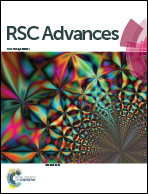Chemical cross-linking abrogates adjuvant potential of natural polymers
Abstract
Natural polymers like chitosan and alginic acid are extensively used in biomedicine for different applications. In linear form, these polymers supported growth of human kidney fibrosarcoma cells as confirmed by in vitro study and shown no visible toxic effects in mice when injected intradermally. However, polymers in linear form mixed with the cartilage protein, collagen type II (CII), induced significant anti-CII IgG response and arthritis in mice. Histological analysis of the arthritic paws showed massive infiltration of immune cells with extensive damage to joint tissues, similar to the classical arthritis induced with CII emulsified with the Freund's adjuvant. This adjuvant property of the linear polymers is not desirable for their use in tissue engineering. Interestingly, though chemical cross-linking of these polymers supported growth of human kidney fibrosarcoma cells, it completely abrogated their adjuvant property. Thus, cross-linking of polymers could be used as a strategy in biomedicine to avoid undesirable immune reactions induced or directed against polymers.


 Please wait while we load your content...
Please wait while we load your content...